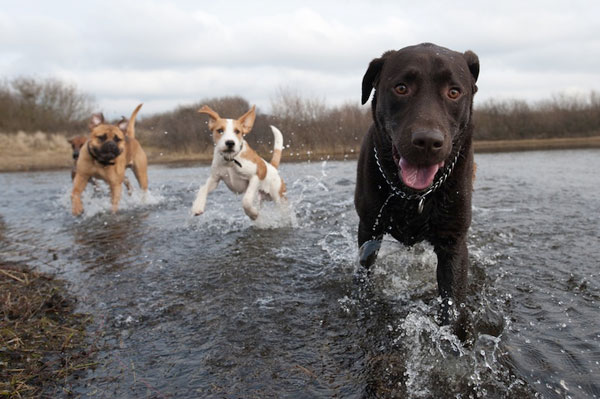Dogs have a different way of understanding words than humans
Dogs can learn the names of objects, but they like to focus on other characteristics when learning words compared to humans did, a new study has found this.
When toddlers learn words about things, they focus on the shape of objects. This means that once your kid receives a tennis ball called a "ball" , the baby quickly realizes the same word applied to the beach ball, basketball and golf ball.
However, they will not assume that a teddy bear is a ball because it has the same fuzzy structure as a tennis ball. They will not call something a ball just because it is the same size as the balls they are familiar with. This trend to classify objects based on shapes on other characteristics is called "shape orientation".
Researcher Emile van der Zee of Lincoln University and his colleagues were interested in finding out whether dogs also tend to favor such forms. Evidence shows that dogs can learn words. Rico, a Border Collie dog died in 2008, can understand more than 200 simple words. A study of this dog published in 2004 in Science magazine found that this male dog actually had a rich vocabulary. Other Collie dogs are also reported to have similar talents.

What is unclear is whether dogs perceive words in the same way that humans do. To find out, Van der Zee and his colleagues experimented on a 5-year-old Border Collie named Gable.
Researchers created different shapes and textures and taught Gable to create words like "dax" to describe them.
The researchers found that when asked to retrieve a specific object, Gable extends the word based on the size of the object. When choosing between a 'dax' sized item and a larger sized object and ordered 'take the dax', Gable selects 'dax' sized objects, regardless tell the texture or shape of the object.
In the second experiment, the researchers gave Gable a choice between an object shaped like one of the objects it was asked to take and another object of the same size. If they were humans, they would choose the required shape, but Gable once again made its decision based on the size of the object.
When allowed to play a toy for several months and then the researchers conducted the test. They found that Gable began to incorporate words about objects with structure rather than size. Obviously, the dog's word learning works very differently than in humans. This conclusion is published online PLoS ONE yesterday, November 21.
"The shape that is important to us, size or texture is more important to your dog , " the researchers wrote. "This study shows for the first time a quality difference between the ability to comprehend words between dogs and humans."
- Found evidence that dogs understand human language
- Dog breeds like to use 2 front legs like boxers
- How to tame the ferocious nature of a hybrid dog
- Dogs or cats love humans more? There have been official conclusions from science!
- 10 most exotic dogs on the planet
- Dogs can find errors in simple calculations
- Why do dogs often tilt their ears when they hear people talking?
- The most beautiful breeds in the world
- Explain the story of cannibal dogs
- Humans and dogs evolved together
- Unexpected discovery of dog loyalty
- Smart dog is 2 years old
 Animal 'suffering' after hibernation
Animal 'suffering' after hibernation Why do goats climb well?
Why do goats climb well? Scientists were surprised to see chimpanzees eating turtles
Scientists were surprised to see chimpanzees eating turtles Giant catfish died deadly due to drought in Thailand
Giant catfish died deadly due to drought in Thailand